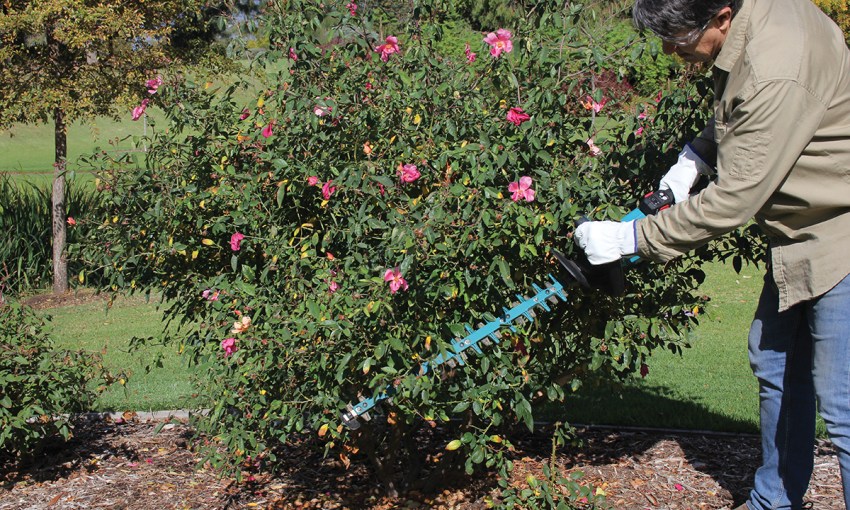How and when is it best to prune your roses? Those are excellent questions. Happily, it’s all a lot easier than you think.
Thorny issues: How to prune roses
Chilly winter nights and plummeting soil temperatures pull the handbrake on once-brilliant, fully-foliaged roses, morphing them into motley-looking, sparse skeletons that hardly befit their mantle as “Queen of Flowers”.
It is in this bedraggled, dormant state they need the tender loving touch of a sharp pair of snips.
Don’t be in a rush to prune your roses. While seemingly dormant, there may still be a slow trickle of sap pulsing through the plant which, if trimmed, would see those cuts weep and increase the potential for disease to enter.
“Prune in June” rhymes nicely, however waiting a few extra weeks will allow that plant sap to stop and cuts to heal more quickly, making late June to early August the top time to break out the secateurs and get amongst your roses. For those in frost-affected areas, it’s best to prune in August, allowing buds to remain dormant and protected with shoots emerging when the worst of the frost has passed.
Whether you prune at the end of June or the end of July won’t make a great deal of difference to the start of your spring flush. As warming weather dictates when a rose breaks dormancy, pruning rose bushes four weeks apart may only equate to a few days’ lag in their respective flowering.
The reasons for pruning roses are threefold: to remove any dead or damaged stems, to help keep the plant well shaped and to promote better flowering in spring. Even though some gardeners may believe rose pruning to be a dark art; shrouded in mystery and only to be tackled by the most highly qualified – that couldn’t be further from the truth.
While rose pruning may not be on top of everyone’s favourite winter jobs, there are ways to greatly reduce the time and the stress involved. For anyone feeling nervous about tackling their roses, remember: some cutting is better than none and, as long as you prune above the main graft, you won’t kill the plant. Also, there are no hard and fast rules about how much top growth needs to be removed. Roses are incredibly forgiving plants. Feeling better?
Having the right tools makes your pruning experience much easier and even, dare I say, enjoyable. You will need a sharp pair of snips, thick gloves (leather preferred), long handled loppers, hedge shears, a pruning saw and a sharpening implement (stone or hand-held).
They say “cleanliness is next to Godliness”, well it’s a good thing to consider when pruning roses. Try to keep all the cuttings in one or a few piles, as chaos cutting doesn’t work particularly well. You’ll be amazed at how quickly arms and legs can become entangled in wayward rose clippings.
Even in the depths of winter, you will find roses in some leaf and flower, obscuring a fair part of the bush. The best way to deal with this, and to start pruning any rose, is to grab the hedge shears and chop straight across the plant, removing the top third of growth. This immediately exposes hidden stems and sets you up for an easier prune.
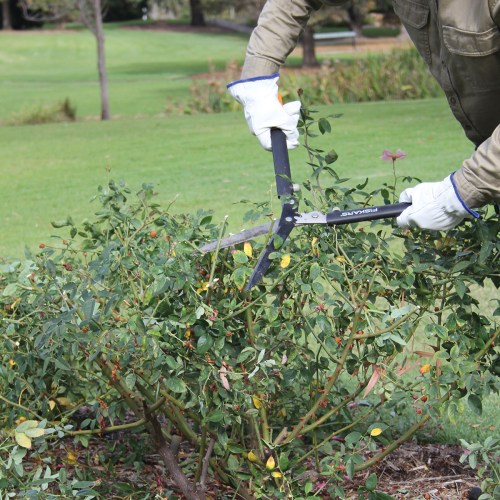
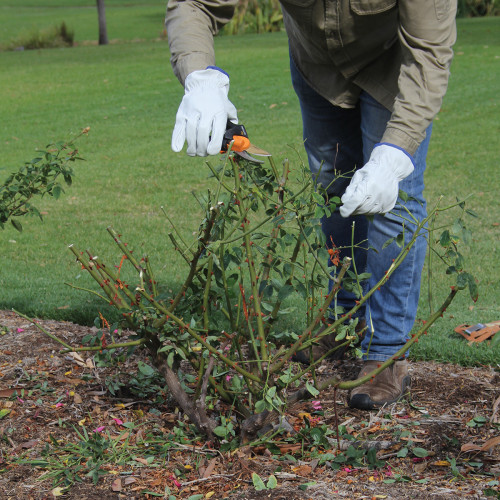
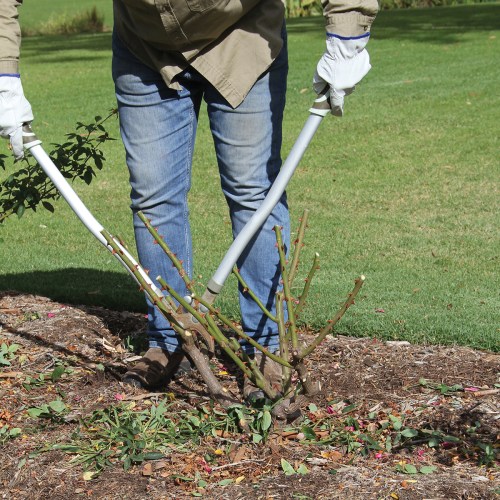
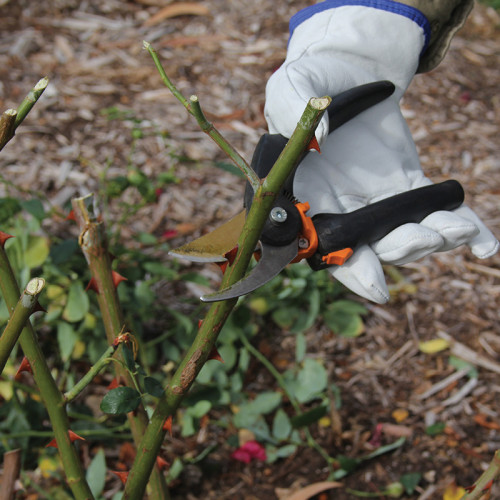
So many people fret about perfectly cutting canes at an outward-facing bud on a 45-degree angle. The biggest time-saver is to forget all that and cut the stem at any angle and at any place you like. After pruning thousands and thousands of roses over the years, the one thing I have learnt is that, as long as you make a sharp cut, the rose couldn’t care less where you make it. Pruning just got easier and quicker, didn’t it?
Avoid cutting into the middle of your rose too much. Opening up the centre tends to encourage plants to spread, increasing diameter, reducing canopy cover and exposing inside stems to sunburn damage. We have all been in rose gardens where, over many years of pruning out the centre, roses have expanded into a wide ring of foliage, crowding each other and making it difficult to know where one rose starts and another stops. Instead, work your way around the outside of the bush, cutting out any stems that might be old or damaged to keep the bush more contained and easier to manoeuvre around come spring.
Keep an eye out for crossovers – where two stems are rubbing or likely to rub against each other – leave the strongest cane and remove the other.
When you come to stems with three strong prongs on top, take out the middle one and shorten the side ones. A general rule of pruning is to reduce the bush by about half the height and half the number of canes, remembering the more buds you leave on each stem, the more flowers the bush will produce in spring. A hard prune will result in fewer, but better-quality blooms, and a lighter one with more flowers. Your choice.
To reduce the stress on your wrist and snips when cutting larger canes, hold the top of the stem being cut and push away as you slice in, the resultant pressure on the cane from that away movement will make cutting significantly easier. You’ll need long-handled loppers to tackle thicker stems that your snips won’t get through and a pull saw for the low, gnarly branches.
Standard roses can be pruned the same way as bush roses, leaving at least half the height and half the canes.
If you are looking for an even quicker way to prune bush and standard roses, grab a battery-operated or petrol hedge trimmer, pop on some safety gear and work your way around the plant removing around two-thirds of growth. Afterwards, it may not look pretty, there will still be plenty of dead or damaged stems left and of course, you’ll receive a few choice comments from passers-by, but the good news is, in three months’ time, the rose will be covered in foliage and flowers and no one will be the wiser!
Have a go at pruning some of your bush and standard roses the traditional way and some mechanically to see which works best in your garden and life.
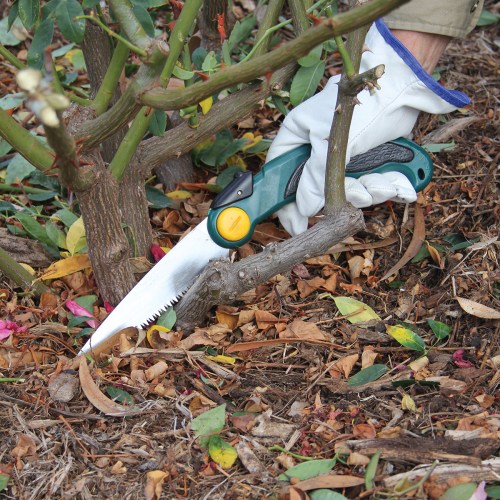
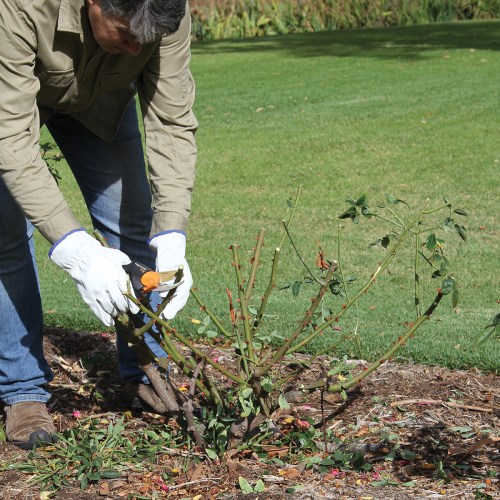
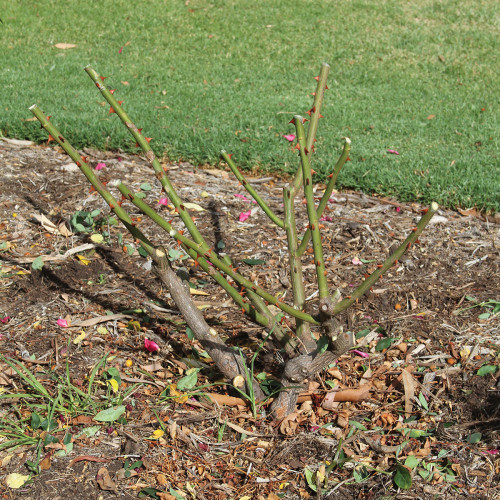
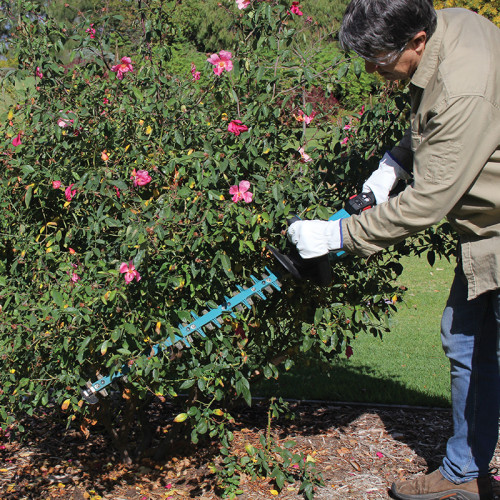
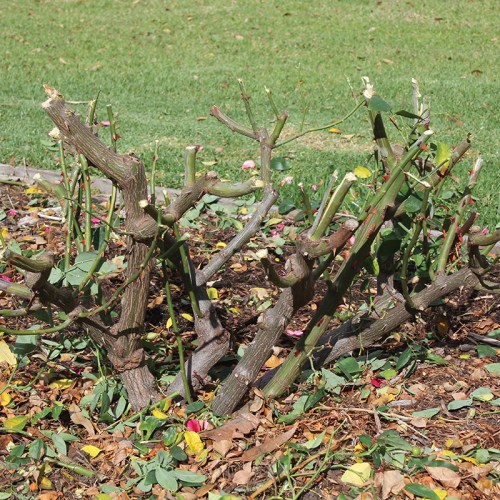
As for climbing roses, they need just a little more care when pruning. In its first two or three years, a climbing rose needs only a tidying winter trim to remove broken branches and any diseased canes. By letting the plant grow without hard pruning, it quickly develops a strong framework.
As climbers bloom best on more horizontally inclined canes, it’s really important to bend, fan out and tie back any branches that plane along the trellis or wires. Training a climbing rose early will ensure good growth and brilliant colour for many years to come. As the climbing rose develops, pruning is more about taking out old wood and tying healthier canes back in their place, removing no more than a third of the plant at a time. Trimming off growing tips encourages better blooming along the rest of the cane in spring. Short flowering spurs produced off larger canes can be cut back to shorter stubs, as these flower a treat.
After pruning, remove trimmings and spray plants with a copper spray such as liquid copper and white oil at the recommended rates. Chip out any weeds and check irrigation in readiness for spring.
Making pruning quick and simple means you can enjoy your roses without that winter cutting stress and give you the confidence to add more of these long-flowering beauties to the garden.
This article first appeared in the June 2021 issue of SALIFE magazine.



